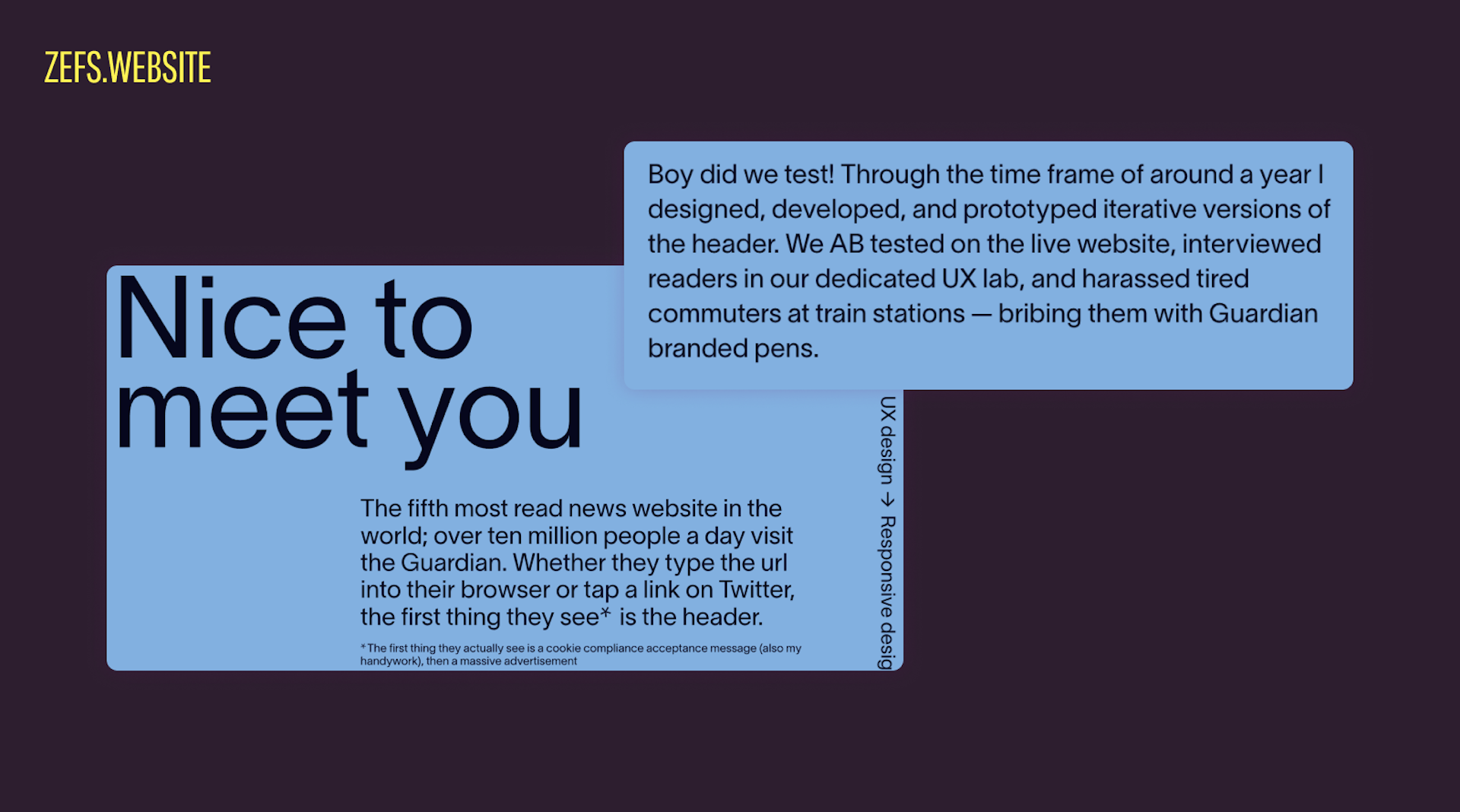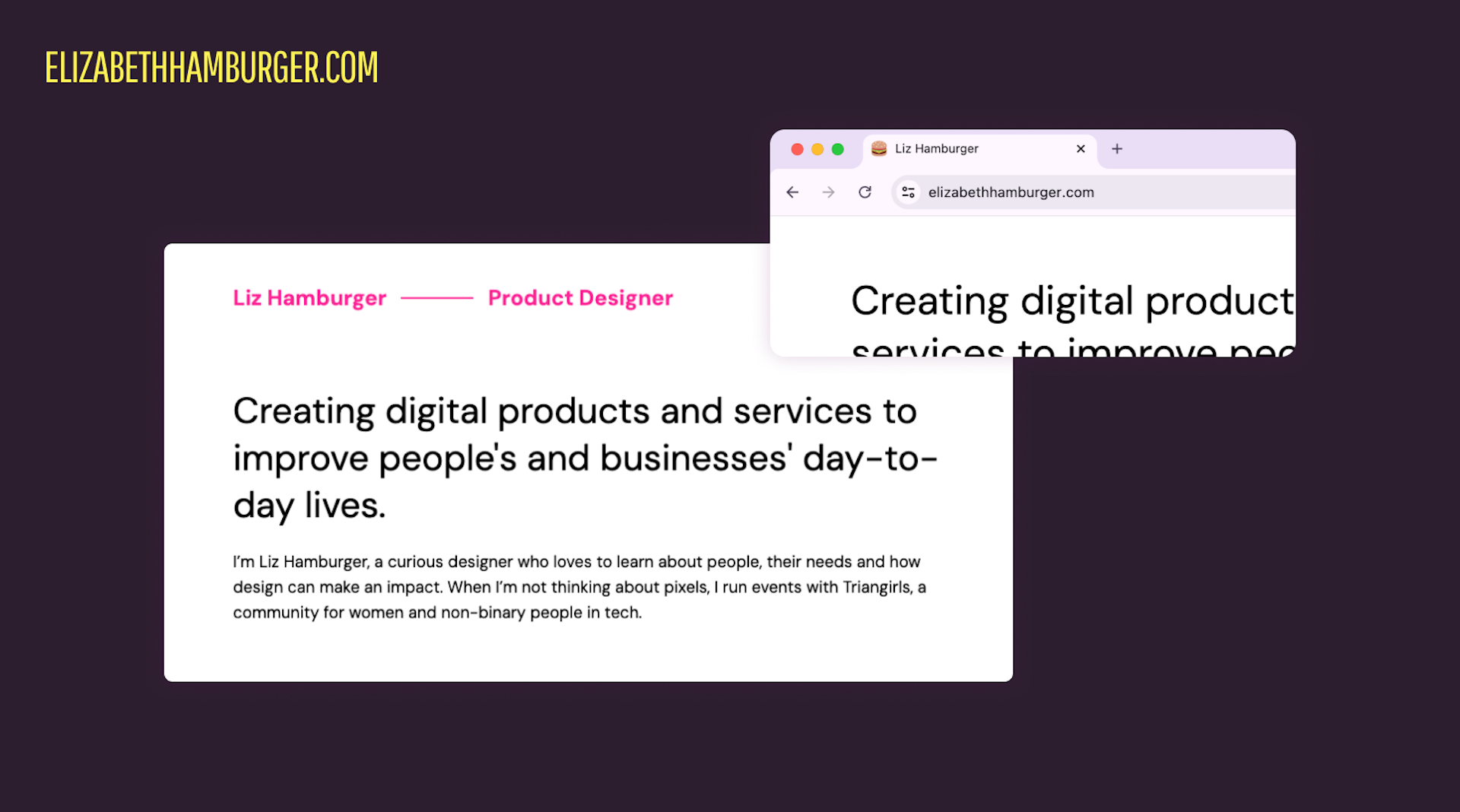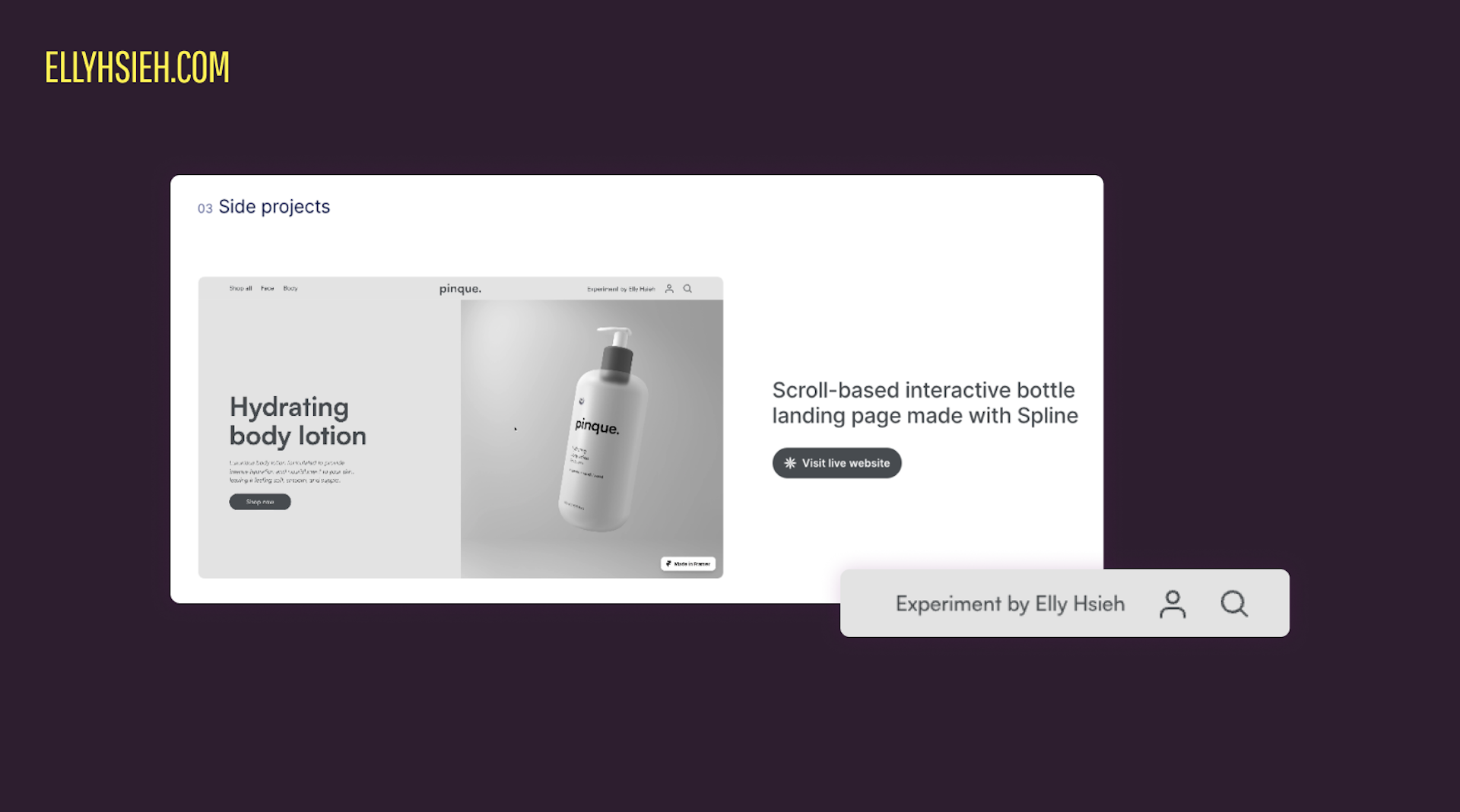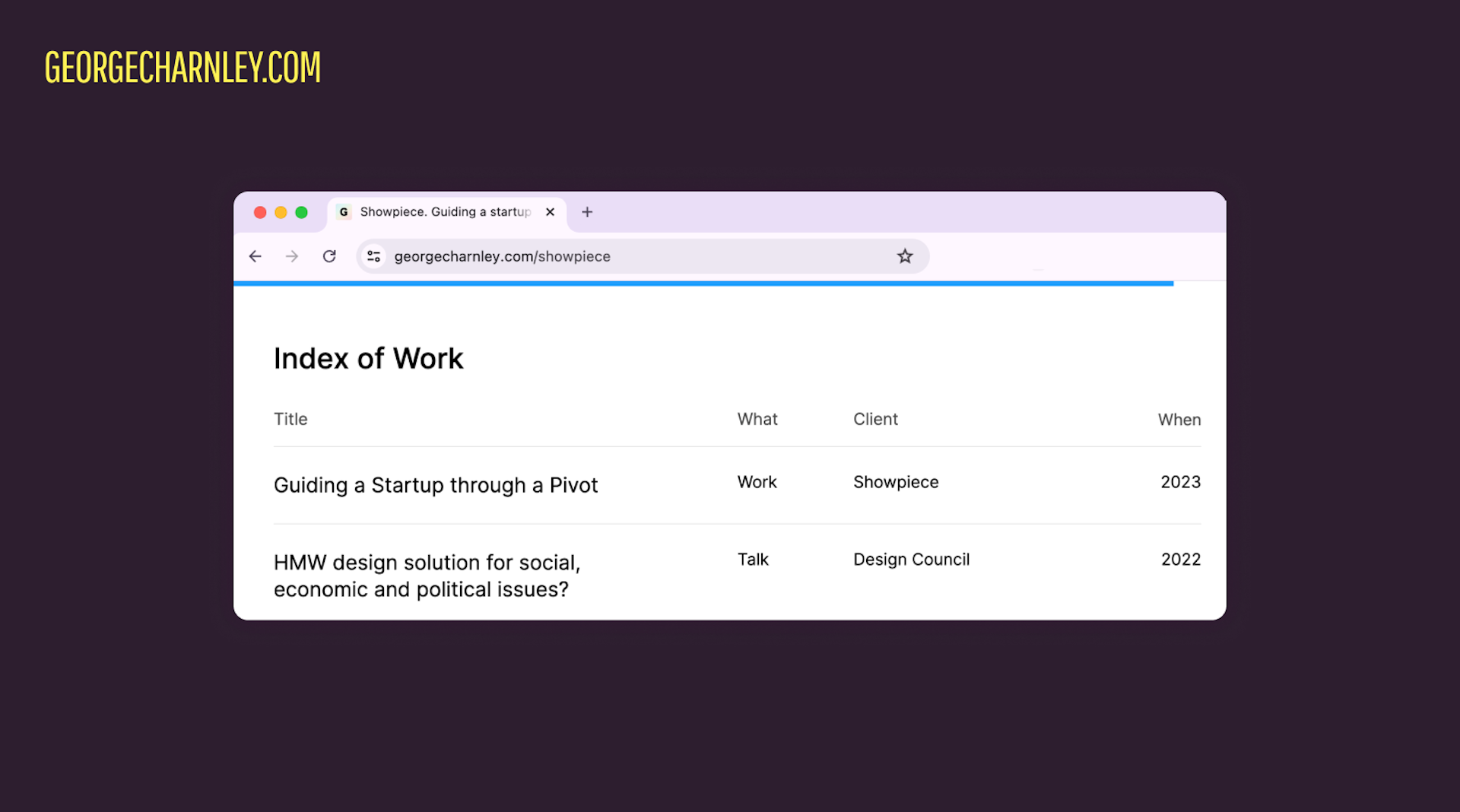What should I put in my portfolio? 3 tips for junior product designers
By Sophie Rahier - 9 June 2025
5 Min Read
The word portfolio is enough to send shivers down any designer's back. No matter what stage of your career, it’s always a task that gets put off. Trust me.
Creating your first portfolio can feel particularly hard. A portfolio is all about showing off your work, so when you don’t have a lot of this, it can feel like an uphill struggle.
That’s where you’re wrong, though. Well, just a little bit. A portfolio is about showing off your work, but it’s also an opportunity to highlight your problem-solving skills, critical thinking and personality.
So whether you have lots of projects or just a few, the key is in how you show your work, not what you show.
Now, don’t just take this from me. At our recent Runway event, I sat down with senior designers and hiring managers to find out their top tips for creating a portfolio. Here they are.
1. Tell a story
A portfolio should be more than a series of completed projects — it should tell a story. How you explain your work gives you a chance to set yourself apart. By presenting it as a story, you’ll not only make it more interesting but also demonstrate your problem-solving skills and thought process.
Venessa Bennett, Global Director of UX Dye & Durham Co told us understanding the rationale behind your work is really important, especially if you lack project experience.
Now, this doesn’t mean you should go out and write essays about your work. Bullet points are your friends, keep it short, sweet and informative.
Example: Zef Cherry-Kynaston uses copy which is informative and adds a bit of personality. More on that next.

2. Show your personality
If you’ve done a boot camp, chances are your portfolio might include the same case studies as the people on your course. If you’ve not done a boot camp, you might find yourself searching online for templates you can follow.
The problem with this is you end up with a portfolio that looks exactly like everyone else's.
Marisa Jensen warned against portfolios that "just feel like they are going through the motions". Remember hiring managers want to see who you are, not just what you’ve done.
If you want to add a bit of personality to your portfolio try adding a brief bio that gives a sense of what you care about. Or add a personal case study, something you’ve done on the side for fun.
Example 1: Liz Hamburger uses her bio and a favicon to show her personality. Fun!
Example 2: Elly Hsieh shows her personality and side projects with a smart 'experiments by Elly Hsieh' tag.


3. Prioritise excellent UX
OK, this one seems obvious. Especially if you’re applying for a UX/UI design job (which we assume is why you’re here). But you’d be surprised how often aesthetics overtake functionality.
Venessa reminded us to use UX chops to make portfolios which are easy to navigate and visually appealing.
Remember:
Ensure your best case study is at the start. Hiring managers often skim through portfolios, so capture their attention quickly.
Avoid clutter. Use bullet points, clear headings, and concise descriptions to make your portfolio easy to read.
Invest in high-quality visuals and a clean layout. First impressions matter, and a polished look can make a big difference.
Example: George Charnley adds his list of case studies at the end of each project, so users always have something to explore next.

Progress over perfection 🚀
This can be a hard one for designers, but if there’s one piece of advice you remember, it’s that done is better than perfect. And it’s definitely better than nothing.
So alongside the tips above, think of your portfolio like a digital product. Start with a basic version that showcases your key projects and skills, then iterate and improve on it based on feedback.
If you’d like to reach out to chat about your portfolio, feel free to connect with any of the Planes designers (we’re a friendly bunch!).